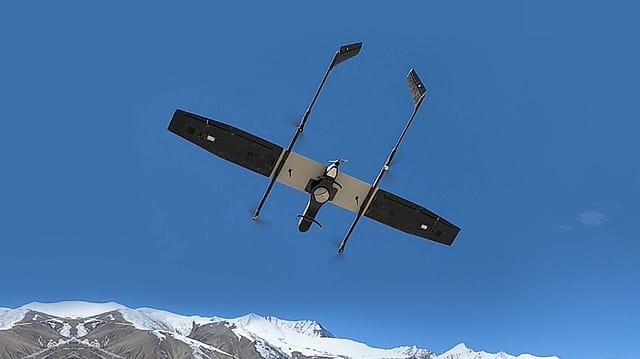Only 6% consumers in India willing to pay for drone deliveries: Survey
ADVERTISEMENT

Only 6% of consumers are willing to pay for the delivery of items via drone service, according to a survey. In comparison, a large number, 87% of respondents, expressed "no interest" in paying for drone-based delivery of food or medicine orders through e-commerce or quick commerce platforms, while only 3% said they are willing to pay ₹250-500 for drone-based delivery, the latest survey by Noida-based community social media platform LocalCircles says.
“This finding indicates that if the cost of drone delivery is not imposed on the consumers, they would be willing to use the services but only a small 6% are willing to pay extra for drone-based delivery,” the survey states.
Around 91% say drones could be useful in the surveillance of India’s borders, 79% mention monitoring disaster sites for relief and evacuation, and 53% refer to the delivery of organ replacements and life-saving drugs.
“In the next 5 years, Indians see top applications of drones in border surveillance, monitoring disaster sites/relief work and delivery of replacement organs to save lives,” it adds.
In India, drones are employed for various tasks including police forces using them for traffic surveillance, and border security agencies deploying them to track smugglers and traffickers. Additionally, drones are also used in agriculture, where they are used to assess crop health, spray fertilisers and pesticides, and generate precise data for yield estimation.
November 2025
The annual Fortune India special issue of India’s Best CEOs celebrates leaders who have transformed their businesses while navigating an uncertain environment, leading from the front.
It says the government had been using drones in a constrained capacity for tasks like inspecting oil pipelines and power transmission lines, conducting anti-locust operations, agricultural spraying, surveying mines, and land mapping for the past couple of years. “In 2022, the government allowed the private players to freely use drones for delivery purposes subject to compliance with drone rules 2021.”
The international drone industry is projected to reach $54 billion by 2025. India’s drone market is expected to grow from $654 million in 2024 to $1.437 billion by 2029, with a compound annual growth rate (CAGR) of 17%. The volume of drones in India is anticipated to increase from 10,803 units in 2024 to 61,393 units by 2029, according to marketsandmarkets.com.
More than 22,000 responses were received from citizens across 298 districts in India. Of these, 63% were men while 37% were women. Additionally, 44% of the participants were from tier 1, 32% from tier 2, and 24% from tier 3, 4 and rural districts.
Among use cases, in November, e-commerce giant Amazon introduced its delivery drones in Arizona’s West Valley Phoenix Metro Area and College Station, Texas. The company says MK30 drone is capable of travelling twice the distance of its predecessors while operating at a lower noise level.
In July, DTDC introduced drone-based deliveries in India with Skye Air Mobility. The maiden drone delivery took place between Bilaspur to Gurugram Sector 92, covering 7.5 kms in just 3-4 minutes, reducing the usual 15-minute travel time by road.
